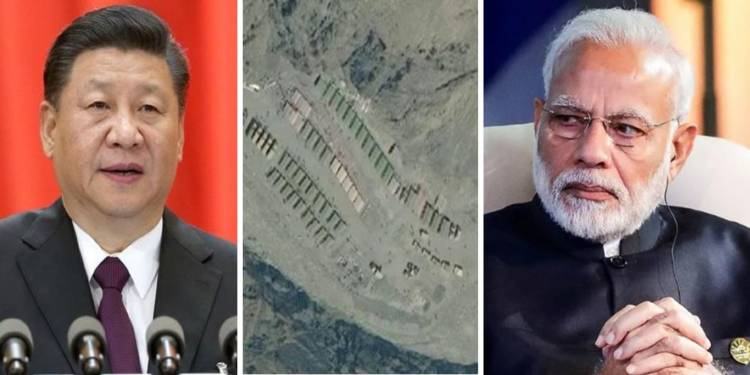Throughout the month of May, China has been trying to provoke tensions on different parts of the Line of Actual Control (LAC), especially in eastern Ladakh. The People’s Liberation Army (PLA) troops have been mobilising in different areas apart from engaging in scuffles and trying to intrude into Indian territory. But Beijing has suddenly tried to defuse tensions, even as the PLA seems to be on the backfoot following the Indian Army’s stiff resistance to Chinese transgressions and aggression.
CCP mouthpiece Global Times has hit out at the Indian media outlets over reports of China’s decision to evacuate its citizens from India in the backdrop of simmering border tensions. Following almost an entire month of aggression at the LAC, China is backing-off from the soaring tensions abruptly.
The State media outlet has stated, “The voluntary repatriation plan should be seen as a normal service provided by the embassy to its citizens. Yet, some Indian media outlets have intentionally linked the normal operation to the recent border tension between China and India in the Galwan Valley region, fueling a new round of irresponsible speculation that China may be preparing for an escalation of the border disputes.”
China’s reaction of denying any links between the evacuation of its citizens and soaring border tensions follows the Indian Army’s tit-for-tat reactions following Chinese aggression.
The first reports of Chinse aggression had come from the Naku La sector in Sikkim and Pangong Tso lake in Ladakh. Both the face offs had resulted in injuries on both sides.
Thereafter, eastern Ladakh has remained tense even as China tried to test India’s endurance relentlessly, but the Indian Army didn’t budge. India has replied to Chinese aggression every single time.
When the movement of Chinese helicopters was picked up, the Indian Air Force had responded immediately by rushing in fighter jets to the border areas in Ladakh, thus thwarting Chinese attempts to violate India’s airspace.
New Delhi took note of Chinese aggression early on, and the Indian Army Chief also made a low-key visit to Ladakh for a security review amidst simmering tensions between India and Ladakh.
China tried to cut India to size India to size by broadening the area of dispute and there were reports of Chinese transgressions into Indian territory. The People’s Liberation Army intruded across three places in the Galwan river area in Ladakh. At each of these three points, 800-1000 Chinese soldiers are said to have crossed into India’s side of the LAC, the effective Sino-India border.
China’s official claim line corresponds to the LAC in the Galwan valley area, and therefore the Chinese troops are intruding into the Indian territory even as per Beijing’s perception of the LAC.
But India doesn’t back off, and The Telegraph quoted an Intelligence Bureau official as saying, “Troops are being flown to eastern Ladakh and deployed at the three standoff locations.”
There have also been reports of a Chinese troop build-up in the Guldong sector, following which the Indian Army has also increased troop deployment in the Indian state of Uttarakhand. India is being assertive and matching every single Chinese move on the Sino-India border.
China is rattled, which is why the People’s Liberation Army troops are trying to stall the solid road infrastructure that India is building to, and along the LAC. But India has made it clear that it will not stop building infrastructure in the strategic areas of what is around 3,500-km Sino-India border.
Defence Minister Rajnath Singh also met the Chief of Defence Staff General Bipin Rawat and the three military chiefs. News18 has stated that as per government sources, Singh has asked the top military brass that there is no need to review key projects along the sensitive areas of the LAC.
Further countering Chinese aggression, the Indian Army has increased its presence in sensitive areas along the Sino-India border in North Sikkim, Uttarakhand and Arunachal Pradesh, apart from Ladakh.
TOI has quoted top government sources as saying that India will continue to “defend its interests resolutely”, deploy “appropriate resources” and work for a peaceful resolution of the simmering tensions.
India has made it clear to the Chinese that it will be reasonable on the diplomatic table, but resolute on the border. China wanted to cut India to size, but New Delhi has made it clear that Beijing will have to learn to live with a new and assertive India. From the Global Times report, it seems that China has also learnt the altered dynamics of Sino-India relations.































